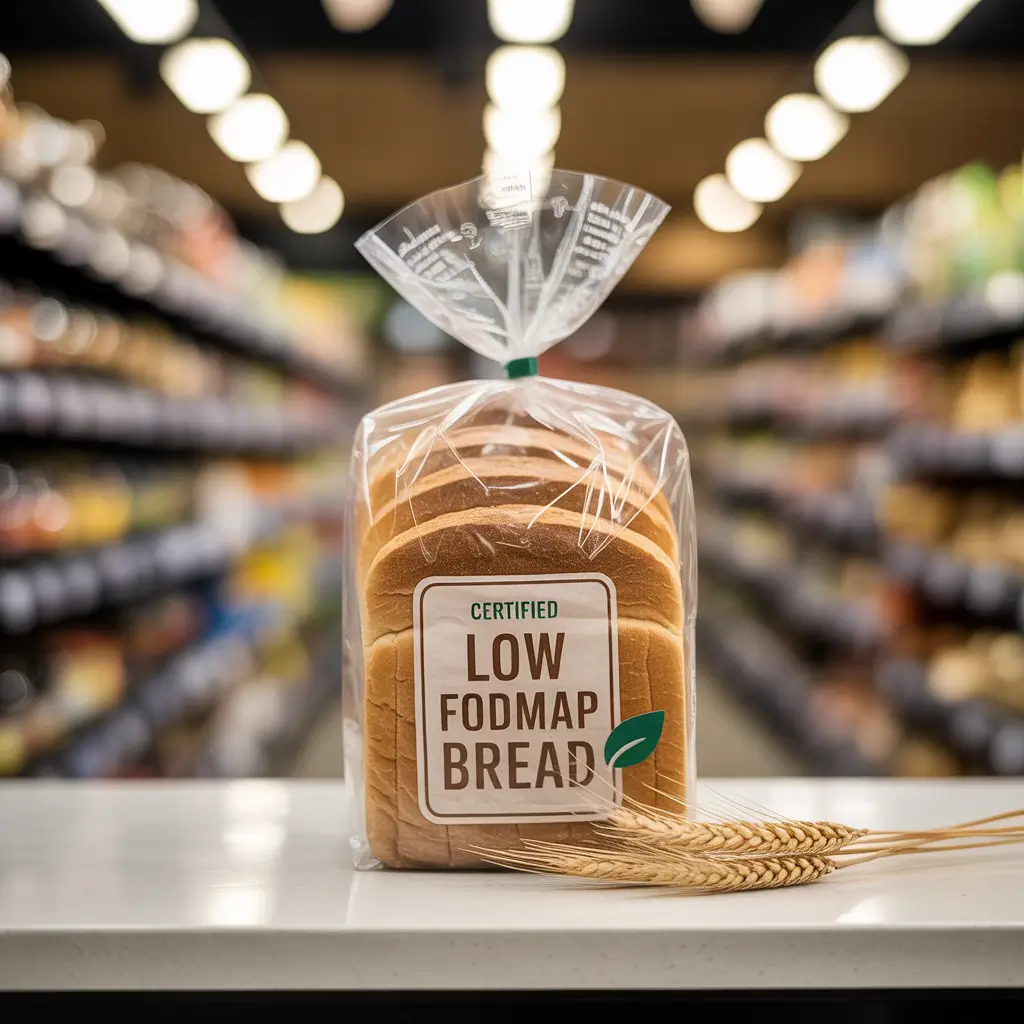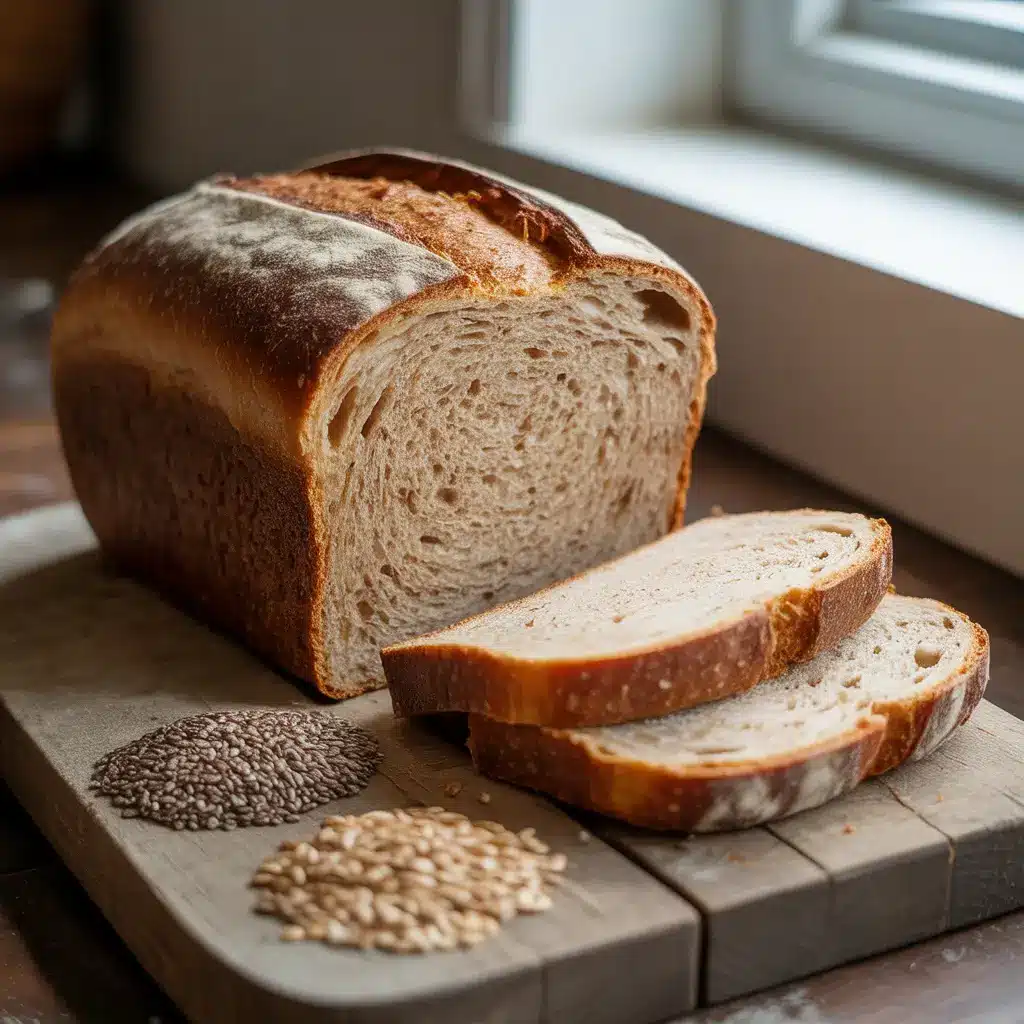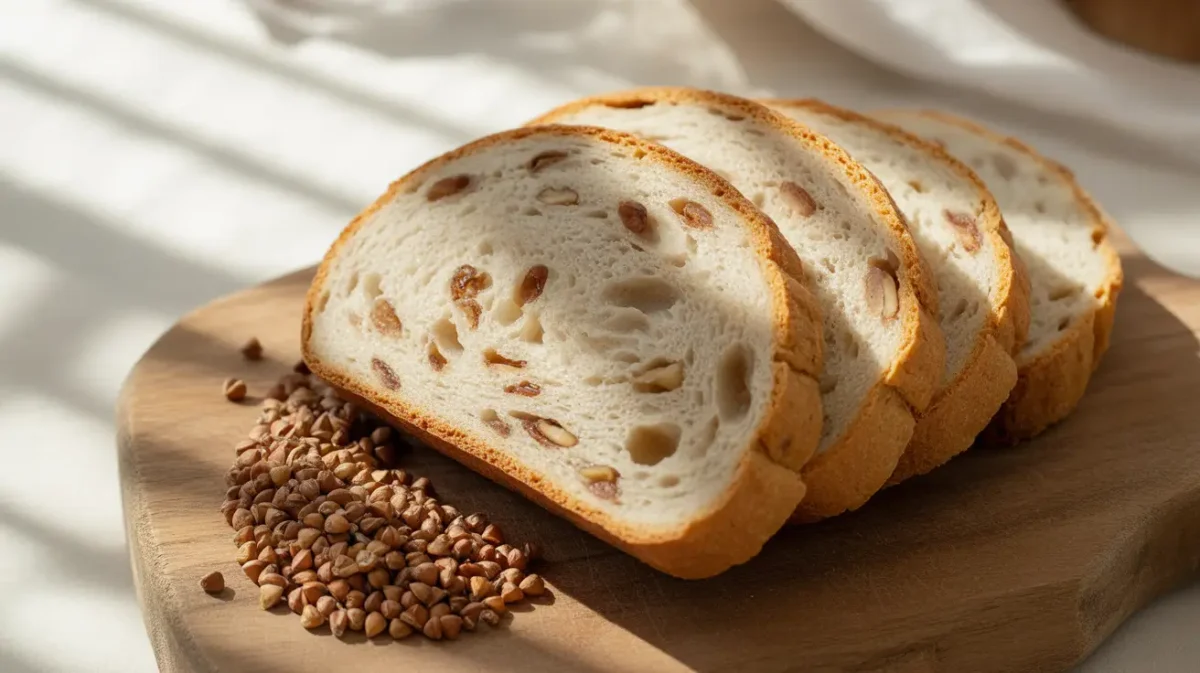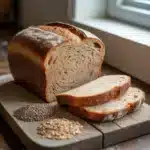Introduction
Low FODMAP diet bread has emerged as a game-changer for anyone battling digestive discomfort, especially those diagnosed with Irritable Bowel Syndrome (IBS). If you’re tired of bloating, gas, and stomach pains after enjoying a simple slice of bread, you’re not alone. The traditional bread-making process often involves ingredients that are high in FODMAPs—fermentable carbs notorious for triggering IBS symptoms. Thankfully, a range of low FODMAP bread options has been designed to satisfy your carb cravings without upsetting your gut.
In this comprehensive guide, we’ll explore everything about low FODMAP diet bread. We’ll unpack what makes bread high in FODMAPs, compare gluten-free versus low FODMAP options, and reveal the best bread choices to help reduce bloating. Plus, if you’re into home baking, we’ll even guide you on crafting your own delicious low FODMAP bread right from your kitchen. Along the way, we’ll also explore related low FODMAP carbs like pasta and other gut-friendly alternatives to keep your digestive health on track.
Learn more about optimizing your diet for digestive health by checking out this insightful guide: https://www.hightasty.com/japanese-pink-salt-trick-recipe/ . Discover our curated Pinterest boards for IBS-friendly cooking: https://fr.pinterest.com/gadeserahmed/
PrintLow FODMAP Diet Bread: The Ultimate Guide to IBS-Friendly Baking
Discover how Low FODMAP Diet Bread can be a game-changer for those managing IBS and digestive discomfort, with homemade options and tips for choosing the best bread for gut health.
- Prep Time: 15 minutes
- Cook Time: 50 minutes
- Total Time: 65 minutes
- Yield: 1 loaf 1x
- Category: Bread
- Method: Baking
- Cuisine: International
Ingredients
- 2 cups rice flour
- 1 cup potato starch
- ½ cup tapioca flour
- 1 tablespoon psyllium husk
- 1 teaspoon salt
- 2 teaspoons baking powder
- 2 tablespoons olive oil
- 1½ cups warm water
Instructions
- Preheat oven to 375°F (190°C).
- In a mixing bowl, combine rice flour, potato starch, tapioca flour, and psyllium husk.
- Add salt and baking powder.
- Stir in olive oil and warm water.
- Mix until the dough forms a slightly sticky consistency.
- Transfer dough to a greased loaf pan, smoothing the surface.
- Bake for 45-50 minutes until golden on top and a toothpick comes out clean.
- Allow to cool completely before slicing.
Notes
For added flavor, incorporate chia seeds or flaxseeds. Ensure the bread is fully cooled before slicing to maintain texture.
Nutrition
- Serving Size: 1 slice
- Calories: 120
- Sugar: 1g
- Sodium: 150mg
- Fat: 4g
- Saturated Fat: 0.5g
- Unsaturated Fat: 3g
- Trans Fat: 0g
- Carbohydrates: 20g
- Fiber: 2g
- Protein: 2g
- Cholesterol: 0mg
Keywords: low FODMAP, bread, IBS, gut health, gluten-free
Understanding the Low FODMAP diet bread
What is a Low FODMAP diet bread?
TheLow FODMAP diet bread is a scientifically backed eating plan developed to help individuals with Irritable Bowel Syndrome (IBS) and similar digestive issues manage their symptoms. FODMAP stands for Fermentable Oligosaccharides, Disaccharides, Monosaccharides, and Polyols—types of carbohydrates that are poorly absorbed in the gut. When these carbs ferment in the intestines, they produce gas and draw water into the bowel, leading to bloating, gas, diarrhea, and pain.
By limiting high FODMAP foods, this diet reduces the fermentable sugars that irritate the gut. This dietary approach is generally structured into three distinct stages: the elimination phase, the reintroduction phase, and finally, the personalization phase. In the elimination phase, all high FODMAP foods are removed. Then, during reintroduction, each food group is tested to identify triggers. Finally, the personalization phase customizes a diet that balances variety with symptom control.
How the Low FODMAP Diet Helps Manage IBS
Irritable Bowel Syndrome (IBS) is a long-term disorder characterized by a variety of symptoms, including abdominal cramps, bloating, constipation, and diarrhea. While triggers vary, diet plays a significant role. Clinical studies have shown that a low FODMAP diet can significantly reduce IBS symptoms in up to 75% of patients.
Low FODMAP diet bread fits perfectly into this approach. Regular bread commonly includes high FODMAP ingredients such as wheat, rye, and barley, which may provoke IBS symptoms and lead to digestive discomfort. By switching to low FODMAP bread options, IBS sufferers can enjoy bread without the discomfort.
Don’t miss our deep dive into gut-friendly dietary hacks here: https://www.hightasty.com/japanese-pink-salt-weight-loss-recipe/
Low FODMAP diet bread: What You Need to Know
Common High FODMAP Ingredients in Traditional Bread
Most conventional Low FODMAP diet bread recipes are built around wheat, rye, or barley—grains high in fructans, a type of oligosaccharide classified under FODMAPs. Fructans ferment in the gut, producing gas and contributing to uncomfortable bloating and IBS symptoms. Beyond the grains themselves, traditional bread often contains honey, high-fructose corn syrup, or dairy-based ingredients like milk powder—all of which are high FODMAP ingredients.
Even whole grain or multigrain breads, despite their health halo, can be packed with fibers that are difficult for sensitive guts to digest. Additives like inulin (a prebiotic fiber) or certain gums and thickeners can also increase FODMAP content. This explains why some individuals experience digestive distress even when consuming breads marketed as “healthy.”
How FODMAPs in Bread Trigger IBS Symptoms
When you consume bread high in FODMAPs, your small intestine struggles to absorb these fermentable carbs. The undigested FODMAPs then travel to the colon, where they feed gut bacteria. As bacteria ferment these sugars, gas builds up—resulting in bloating, flatulence, and stomach pain. Additionally, FODMAPs attract excess water into the intestines, potentially causing diarrhea or, in some cases, contributing to constipation for individuals with IBS.
For individuals managing IBS, knowing which bread to choose—or avoid—can make all the difference between a comfortable meal and a painful episode. Choosing low FODMAP diet bread crafted without high-fructan grains or added sugars is essential for keeping symptoms at bay.
Discover great ideas like gut-friendly recipes and dietary tips here: https://www.hightasty.com/japanese-pink-salt-diet-recipe/
ChatGPT said:
Types of Low FODMAP Diet Bread

Certified Low FODMAP diet bread Options Available in Stores
If you’re navigating supermarket aisles in search of low FODMAP diet bread, you’ll be pleased to know that several brands now offer certified options. Certification ensures the bread has been lab-tested to meet strict FODMAP content limits, providing peace of mind for those with IBS. Brands like Schär, FODMAP Friendly, and Genius offer pre-packaged loaves specifically formulated without high-FODMAP ingredients.
Many of these Low FODMAP diet bread are made from gluten-free grains such as rice, corn, quinoa, or sorghum—naturally lower in FODMAPs. However, it’s essential to double-check ingredient lists because not all gluten-free products are automatically low FODMAP. Look out for added sweeteners like honey or agave, chicory root fiber, or apple fiber, which can still provoke symptoms.
Here’s a quick comparison table of popular Low FODMAP diet bread brands:
| Brand | Key Ingredients | FODMAP Status | Best For |
|---|---|---|---|
| Schär | Rice flour, corn starch | Certified | Sandwiches & Toast |
| FODMAP Friendly | Gluten-free flour blend | Certified | Daily consumption |
| Genius Gluten Free | Tapioca, potato starch | Often low | Toast & Breakfast |
Homemade Low FODMAP Bread Recipes
For those who prefer baking at home, crafting your own Low FODMAP diet bread can be both satisfying and gut-friendly. Using ingredients like rice flour, spelt flour (in small quantities), or buckwheat flour can yield delicious results.
A simple homemade recipe might include:
- 2 cups rice flour
- 1 cup tapioca starch
- 1/4 cup potato starch
- 1 tablespoon olive oil
- 1 teaspoon salt
- 2 teaspoons baking powder
- Water to form dough
This basic blend avoids high FODMAP triggers while offering a soft, chewy texture perfect for sandwiches or toast. Adding chia seeds or flaxseeds can also enhance fiber content without upsetting sensitive stomachs.
Looking for inspiration? Try more gut-health hacks and DIY recipes here: https://www.hightasty.com/japanese-pink-salt-recipe/
Is Gluten-Free Bread Low FODMAP?
The Difference Between Gluten-Free and Low FODMAP
It’s easy to assume that gluten-free bread is automatically low FODMAP, but that’s not always the case. While gluten-free bread eliminates gluten—a protein found in wheat, rye, and barley—it doesn’t necessarily eliminate the FODMAPs present in those grains. Fructans, the main FODMAP culprit in wheat, remain an issue even when gluten is removed.
Additionally, many gluten-free breads include ingredients that can still irritate sensitive digestive systems. Ingredients like chicory root (inulin), honey, agave syrup, or fruit juice concentrates are often added for taste or texture but are high in FODMAPs. That’s why it’s critical to read labels carefully before assuming a gluten-free bread is also safe for a low FODMAP diet.
When Gluten-Free Bread is Safe for IBS
Some gluten-free breads are inherently low FODMAP, especially those made primarily with rice flour, sorghum, potato starch, and cornflour. These ingredients tend to be gentle on the gut and won’t ferment excessively in the colon. Brands that carry FODMAP certification or are labeled as IBS-friendly provide an added layer of security for shoppers.
In moderation, gluten-free bread made with low FODMAP ingredients can be a suitable option for IBS sufferers. The key is balance—consuming small portions and observing your body’s reaction. When in doubt, consulting a dietitian experienced in the low FODMAP diet can help you tailor your bread choices for optimal gut health.
Best Bread for IBS and Bloating

Top Recommended Bread Types to Reduce Bloating
When it comes to combating bloating while enjoying bread, selecting the right type is crucial—especially for those following a low FODMAP diet. Certain breads are less likely to ferment in the gut, reducing the chances of gas buildup and discomfort.
Sourdough bread made from spelt flour (in controlled portions) is often tolerated well by IBS sufferers. The slow fermentation process involved in making sourdough helps break down fructans, lowering the FODMAP content naturally.However, only true sourdough made through traditional long fermentation processes is considered low in FODMAPs.
Bread made from rice flour or buckwheat is another great alternative, as both grains are naturally gluten-free and low in FODMAPs, which makes them easier on digestion. Similarly, potato-based breads can be a good option, provided they are prepared without dairy or ingredients high in fructose.
Key Ingredients to Look for in IBS-Safe Bread
When shopping or baking for IBS-safe bread, always check for these gut-friendly ingredients:
- Rice flour: Low FODMAP and neutral flavor.
- Sorghum flour: Naturally gluten-free and fiber-rich.
- Potato starch: Adds softness without increasing FODMAPs.
- Chia seeds or flaxseeds: Boosts fiber gently.
- Spelt flour (small amounts): Low FODMAP when properly fermented.
Avoid ingredients like honey, inulin (chicory root fiber), apple fiber, and artificial sweeteners such as sorbitol or mannitol, all of which can trigger bloating and discomfort.
By carefully selecting or baking bread with these considerations, you can significantly reduce bloating and maintain digestive comfort while enjoying your favorite carbs.
Comparing Low FODMAP diet bread vs Regular Bread
Nutritional Comparison
One common question among those transitioning to a Low FODMAP diet bread is whether low FODMAP diet bread offers the same nutrition as regular bread. The truth is, there can be differences, but that doesn’t mean sacrificing health benefits.
Regular bread, especially whole wheat or multigrain, often contains more fiber, B vitamins, and minerals due to the whole grains used. However, these same grains are high in fructans, making them unsuitable for people with IBS. Low FODMAP bread, on the other hand, might rely on rice flour, potato starch, or cornflour—ingredients that are lower in fiber and protein.
Fortunately, many low FODMAP breads are fortified with added fibers like resistant starches, chia seeds, or flaxseeds to bridge the nutritional gap. Some brands even incorporate protein-rich flours like quinoa or buckwheat to enhance the nutritional profile.
Here’s a quick comparison table:
| Nutrient | Regular Bread | Low FODMAP Bread |
|---|---|---|
| Fiber | Higher | Moderate |
| Protein | Moderate | Variable |
| FODMAP Content | High | Low |
| IBS-Friendly | No | Yes |
Taste and Texture Differences
Taste and texture are often concerns when switching to alternative breads. Regular bread has a familiar chewy texture and yeasty flavor due to wheat gluten. Low FODMAP bread, however, may feel denser or crumblier since it lacks gluten unless binders like psyllium husk are used.
Taste can vary widely depending on the flour base. For example, rice flour breads have a mild, neutral flavor, while buckwheat bread carries a nuttier, earthier taste. With proper baking techniques and ingredient choices, homemade or store-bought low FODMAP breads can closely replicate the enjoyable qualities of traditional bread without the gut-wrenching side effects.
How to Make Your Own Low FODMAP Bread at Home

Key Ingredients for Low FODMAP Bread
Baking low FODMAP bread in your own kitchen is a great way to control ingredients and ensure it’s safe for IBS sufferers while customizing flavors to your liking. The secret lies in using naturally low FODMAP ingredients that still provide good texture and taste.
Begin with a gluten-free flour mix made from rice flour, potato starch, and tapioca flour—all low in FODMAPs and ideal for baking. If tolerated, a small amount of certified spelt flour can be added, as long as it’s within safe serving limits. For extra moisture and a better crumb, consider mixing in psyllium husk, chia seeds, or flaxseeds.
Other important ingredients include:
- Olive oil or coconut oil for moisture
- Baking powder or yeast to help the bread rise
- A pinch of salt for enhancing flavor
- Water or lactose-free milk as the liquid base
Simple Low FODMAP Bread Recipe
- Preheat your oven to 375°F (190°C).
- In a mixing bowl, combine:
- 2 cups rice flour
- 1 cup potato starch
- ½ cup tapioca flour
- 1 tablespoon psyllium husk
- Add 1 teaspoon salt and 2 teaspoons baking powder.
- Stir in 2 tablespoons olive oil and 1½ cups warm water.
- Mix until the dough forms—it should have a slightly sticky consistency.
- Transfer the dough to a greased loaf pan, smoothing the surface.
- Bake for 45 to 50 minutes, or until the top is golden and a toothpick inserted comes out clean.
- Allow to cool completely before slicing.
This easy, gut-friendly bread is soft, satisfying, and perfect for making sandwiches or enjoying toasted.
Other Low FODMAP Carbohydrate Alternatives
Low FODMAP Pasta Options
Bread isn’t the only carbohydrate that can trigger digestive issues in those with IBS. Pasta is another common culprit—particularly wheat-based varieties that are high in fructans. Fortunately, there are several low FODMAP pasta options that allow you to enjoy a hearty meal without the stomach upset.
Gluten-free pasta varieties made from rice, corn, or quinoa are generally low in FODMAPs and are often well-tolerated by individuals with IBS. You can also enjoy pasta made from 100% buckwheat or small portions of spelt pasta—specifically around 1/2 cup cooked—without triggering symptoms, provided they are consumed within recommended limits.
List of Low FODMAP Pasta Options:
- Brown rice pasta
- Quinoa pasta
- Corn-based pasta
- 100% buckwheat noodles (like soba)
- Spelt pasta (limited serving)
Always check the ingredient labels to ensure there are no added high FODMAP components like inulin or onion powder.
Low FODMAP Grains and Snacks
For those looking to diversify their carbs beyond bread and pasta, several grains and snacks are naturally low in FODMAPs and gentle on the gut. These include:
- Oats (plain and unsweetened)
- Polenta
- Quinoa
- Rice (white, brown, jasmine)
- Popcorn (plain, air-popped)
- Rice cakes
These alternatives not only provide variety but also help maintain a balanced diet while managing IBS symptoms. Incorporating these options ensures you don’t miss out on essential nutrients while keeping your gut calm and comfortable.
Tips for Maintaining a Low FODMAP Diet Long-Term
Meal Planning with Low FODMAP Breads
Sticking to a Low FODMAP diet bread can feel overwhelming, but with smart meal planning, it becomes second nature. When it comes to bread, start by selecting or baking a batch of low FODMAP diet bread each week. Pre-slicing and freezing portions can help you manage servings and reduce waste.
Plan balanced meals by pairing low FODMAP bread with compatible proteins like grilled chicken, turkey, or tofu. Add toppings such as lactose-free cheese, cucumber slices, or tomatoes (in limited amounts) to build satisfying, gut-friendly sandwiches. For breakfast, low FODMAP bread works well with peanut butter, a drizzle of maple syrup, or poached eggs.
Rotating different types of bread—like rice flour, spelt sourdough, or buckwheat—can keep your diet varied and interesting, reducing the risk of taste fatigue.
Avoiding Hidden FODMAPs in Packaged Foods
Even with careful choices, hidden FODMAPs can sneak into packaged foods, including some breads and snacks. Always read ingredient labels carefully. Watch out for common high FODMAP ingredients like:
- High-fructose corn syrup
- Honey and agave syrup
- Chicory root or inulin
- Apple or pear juice concentrates
- Sorbitol, mannitol, xylitol (sugar alcohols)
When dining out or trying new products, opt for those marked “FODMAP Friendly” or certified low FODMAP. Maintaining a food diary is a useful strategy for monitoring your individual tolerance and pinpointing specific foods that may trigger IBS symptoms.
By staying informed and proactive, you can comfortably enjoy a variety of delicious, low FODMAP foods—including bread—while keeping your IBS symptoms under control.
FAQs About Low FODMAP Diet Bread
What bread is safe for IBS?
Breads made with rice flour, potato starch, or sourdough spelt (small portions) are typically safe for IBS. Certified low FODMAP brands are best.
Is pasta low in FODMAP?
Yes, gluten-free pasta from rice, corn, or quinoa is low FODMAP. Buckwheat and small servings of spelt pasta are also tolerated.
What bread is best to stop bloating?
Low FODMAP breads like rice flour, buckwheat, or authentic sourdough spelt reduce bloating by minimizing fermentable carbs.
Is gluten-free bread okay for low FODMAP?
While some gluten-free breads are suitable for a low FODMAP diet, not all fit the criteria. It’s important to review the ingredient list for high FODMAP additives such as honey, inulin, or chicory root.
Can sourdough bread be low FODMAP?
Yes, traditionally fermented sourdough made with spelt or wheat is often low FODMAP in small servings.
What is the recommended amount of bread to consume while following a low FODMAP diet?
Stick to 1-2 slices per meal to avoid symptom flare-ups.
Conclusion
Low FODMAP diet bread is a smart choice for anyone with IBS seeking relief from bloating and discomfort. By choosing certified low FODMAP or homemade options and watching portions, you can enjoy bread without triggering symptoms.
Pair it with other low FODMAP carbs like rice pasta or quinoa for a balanced, gut-friendly diet.
For more gut health tips, check out: https://www.hightasty.com/japanese-pink-salt-trick-recipe/.Check out our Facebook page for more gut-friendly recipes: https://www.facebook.com/profile.php?id=61568048948605&locale=fr_FR



3 thoughts on “Low FODMAP Diet Bread: The Ultimate Guide to IBS-Friendly Baking”
Comments are closed.